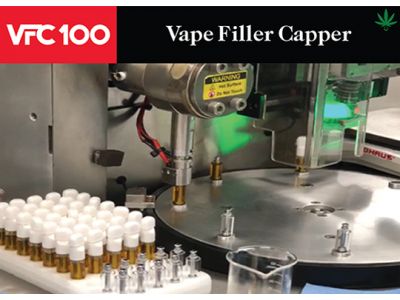Vape Cartridge Filling Automation and the Importance of Inline Capping

In recent years the Cannabis industry has witnessed a remarkable shift towards automation, driven by the need for increased consistency and precision in production processes. One area that has significantly benefited from the technological advancement is filling and capping of cannabis vape cartridges. Traditionally these tasks were labor intensive and prone to human error, leading to product inconsistencies and waste. However, with the integration of automated systems, cannabis processors can now achieve higher production volumes while maintaining stringent quality control standards.
Moreover, capping immediately after filling a cannabis vape cartridge is crucial to prevent oxidation and maintain the products quality and potency. The cap helps seal the cartridge, preventing air, air born contaminants and moisture from entering, which can degrade the cannabinoids and terpenes in the oil. This ensures a longer shelf life and a more consistent vaping experience for all users.
An uncapped vape cartridge will likely leak if left open due to temperature and air pressure. When the cartridge is uncapped it exposes the oil to the surrounding air. This can cause the oil to expand and contract with temperature fluctuations, leading to pressure changes that force the oil out of the cartridge. To prevent leakers and deliver a clean sanitary product it is essential to cap as soon as possible after filling.

